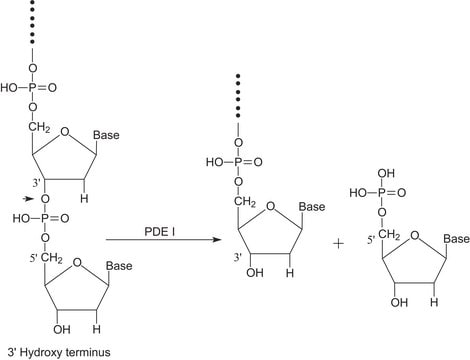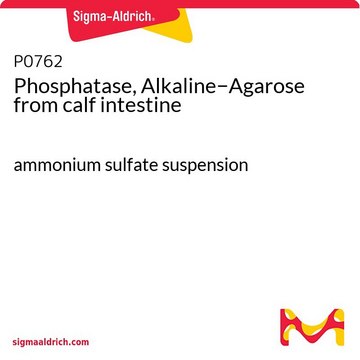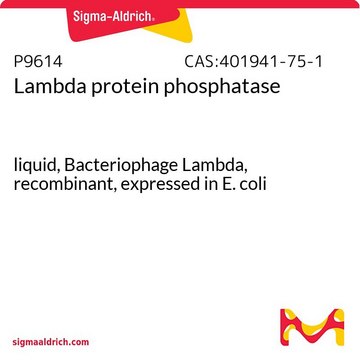P4978
Phosphatase, Alkaline from calf intestine
buffered aqueous glycerol solution
Synonym(s):
CIAP, CIP, Orthophosphoric-monoester phosphohydrolase (alkaline optimum)
About This Item
Recommended Products
grade
for molecular biology
form
buffered aqueous glycerol solution
mol wt
~80 kDa
concentration
≥10,000 units/mL
UniProt accession no.
foreign activity
DNase, RNase, none detected
shipped in
wet ice
storage temp.
−20°C
Gene Information
cow ... ALPI(280993)
Looking for similar products? Visit Product Comparison Guide
General description
Application
Components
Unit Definition
Other Notes
inhibitor
related product
substrate
Storage Class Code
10 - Combustible liquids
WGK
WGK 1
Flash Point(F)
Not applicable
Flash Point(C)
Not applicable
Choose from one of the most recent versions:
Already Own This Product?
Find documentation for the products that you have recently purchased in the Document Library.
Customers Also Viewed
Protocols
CIP is used to remove 5’-phosphate groups from DNA, RNA and both ribo and deoxy-ribonucleoside triphosphates. Detailed protocol on how to dephosphorylate DNA.
Enzymatic Assay of Alkaline Phosphatase, Diethanolamine Assay (EC 3. 1. 3. 1)
Our team of scientists has experience in all areas of research including Life Science, Material Science, Chemical Synthesis, Chromatography, Analytical and many others.
Contact Technical Service






